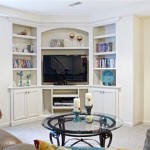Essential Aspects of Cabinet Hardware Guide Template
Cabinet hardware serves both functional and aesthetic purposes, enhancing both the usability and visual appeal of your cabinetry. A comprehensive Cabinet Hardware Guide Template can aid in selecting the right hardware for your project, ensuring a perfect fit and a cohesive design.
1. Material and Finish
The material and finish of your cabinet hardware play a crucial role in its durability and aesthetic appeal. Common materials include:
- Stainless steel: Durable and corrosion-resistant, available in various finishes such as brushed, polished, or satin.
- Brass: Warm and classic, with a range of finishes including aged, antique, or polished.
- Nickel: Durable and versatile, with a brushed or polished finish.
- Zinc alloy: Lighter and more affordable than other metals, often used for contemporary designs.
Consider the style of your cabinetry and the overall design of your home when choosing a hardware finish that complements the aesthetics.
2. Shape and Design
Cabinet hardware is available in an array of shapes and designs, each offering a unique visual impact. Popular shapes include:
- Knobs: Rounded or square, knobs provide a classic and comfortable grip.
- Handles: Available in various lengths and shapes, handles offer a more substantial grip.
- Pulls: Similar to handles but designed for drawers, pulls provide a wide grip for easy operation.
- Cups: Recessed handles integrated into the cabinet surface, providing a modern and minimalist look.
Choose the shape and design that best aligns with the style of your cabinetry and the intended use.
3. Size and Placement
The size and placement of cabinet hardware are crucial for both functionality and aesthetics. When selecting hardware size, consider the size of your cabinets and drawers:
- For small cabinets, smaller knobs or handles around 1-2 inches in diameter are suitable.
- Larger cabinets benefit from handles or pulls around 3-4 inches in length.
Proper placement ensures ease of use and a visually balanced design. The industry standard for horizontal placement is to center the hardware on the drawer or door. For vertical placement, the hardware is typically positioned about one-third down from the top.
4. Installation Options
Cabinet hardware can be installed using various methods, including screws, through-bolts, or self-adhesive backing:
- Screws: The most common method, using screws to secure the hardware to the cabinet.
- Through-bolts: Provide a more secure installation for heavier hardware.
- Self-adhesive backing: Convenient for lightweight hardware, such as decorative knobs or small pulls.
Choose the installation method that best suits the weight of the hardware and the type of cabinetry.
5. Organization and Storage
Cabinet hardware can also serve an organizational purpose. Consider hardware with built-in storage features, such as:
- Hooks: Hang small items like keys or towels.
- Drawer dividers: Organize drawers and maximize storage space.
- Shelf pegs: Support shelves and create additional storage options.
These features can enhance the functionality of your cabinetry, making organization and storage a breeze.
By carefully considering the material, design, size, placement, and installation options, you can select the perfect cabinet hardware for your project. A comprehensive Cabinet Hardware Guide Template provides all the necessary information to make informed decisions, ensuring a cohesive and functional cabinetry design.

Align Right Large Cabinet Hardware Installation Template

Cabinet Hardware Installation Template Amerock

Cabinet Hardware Installation Template Rejuvenation

Cabinet Hardware Jigs Vs Templates

Liberty Alignright Clear Mounting Template In The Cabinet Hardware Accessories Department At Com

Align Right Large Cabinet Hardware Installation Template

Diy Cabinet Hardware Template Installation Made Easy

Diy Cabinet Hardware Template Installation Made Easy

Diy Cabinet Hardware Template Installation Made Easy

Cabinet Hardware Installation Template Amerock
Related Posts








